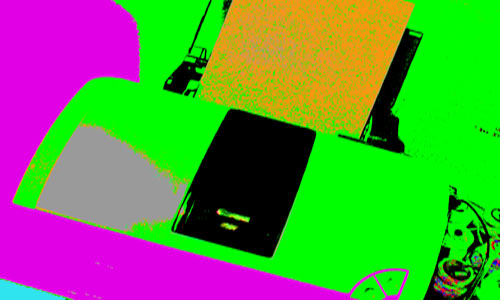Yesterday
I got an email about an article that appeared in PC World Magazine
concerning the reduced life of prints made with third party ink....
First, why do they call it THIRD Party-- it would seem that a company
other than the manufacturer of the printer would be the SECOND party :-)
Anyway, the article reflects findings by Wilhelm that tested prints put
under intense accelerated light exposure. He sets the benchmark for
LABORATORY testing of papers and ink. Generally a good STARTING POINT.
It comes as no great surprise, that the prints using cheaper inks have a
shorter life span-- BUT WHAT DOES
THIS REALLY MEAN?
Several important things to consider.
1) Example, a set of official Canon Inks will cost you six times what, for
example, as set of G and G Inks (from Inkgrabber - one source) will cost.
That's $75 for a set of ink carts, versus about $15. Wilhelm states
right off the bat that the quality of prints are comparable to the OEM inks.
2) How many prints do you really need to last 25 years or more? Are some for
short or temporary use? What percentage?
3) Are your prints subject to constant intense light, or looked at a couple
times than put in an album or drawer, and hardly looked at again?
4) Do you have copies of all of your savable images permanently on a hard
drive or disc?
In my case, and in my personal experience, I rarely leave a photo in the
same place on a wall for more than a couple of years at most. And this is
never in direct sunlight.
>>>>>In these
cases, example on my office wall, I have dozens of prints, all printed with
cheap ass MIS ink or Inkgrabber ink, that have been on my wall in indirect,
but bright, light for four years or more. NO FADING noticeable. These are
with Wilhelm's WORST rated inks. And I don't even put them in frames or
behind glass. Scotch tape to wall. That's it.<<<<<<
This is despite that fact that Wilhelm claims seriously accelerated fading
in HIS TESTS. Good grief, its his job to TRY and make prints fade. In
the real world, you will be hard pressed to make this occur. http://www.pcworld.com/news/article/0,aid,111767,00.asp
If one of these prints eventually fades, I make another. Simple. but it
hasn't happened yet.
Would I buy a set of official $75 Canon inks just so I don't have to worry
about this for 25 years? I don't think so.
Anybody needing a like new perfect copy of one of my pictures can simply go
to my hard drive and print one, and if necessary use archival inks and
papers. But that's something I am just not concerned with. And I think the
need for this kind of thing is greatly overstated by anyone except those
making art prints.
Take this into consideration-
1) Its Wilhelm's job his job to TRY and make prints fade. In the real world,
you will be hard pressed to make this occur. Most of us are not leaving our
prints up on the roof under the summer sun. Yes, his tests are accelerated
to SIMULATE normal light conditions - but his results have not been borne
out by my REAL non-simulated conditions. Sorry Wilhelm.
2) PC World Magazine makes their
money running ads by companies like HP, Canon, and Epson, who make ALL of
their printer revenue not on their
printers, but their INK REFILLS. I
would say that PC World is not going to give you much information that bites
the hands that feed them. I am sure they were delighted to run the article
below- but frankly, my real world experience makes this article mostly
irrelevant.
http://www.pcworld.com/news/article/0,aid,111767,00.asp
My Wall of Photos

-Neil
Slade

 The Amazing Brain Music Adventure
The Amazing Brain Music Adventure